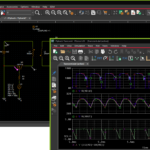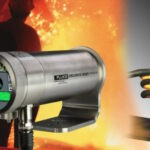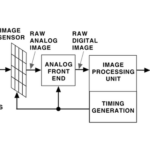Temperature is certainly the most obvious answer but there are other sensors that are increasingly being employed in the smartest homes and buildings. With the right sensor inputs, several actions can be taken by actuators to increase health/safety as well as comfort.
In addition to temperature measurements, pressure, humidity and air quality sensing in ducts and even outside the building can add to the inhabitants’ comfort. Air quality can be improved with sensors that measure CO2 as well as volatile organic compounds (VOCs).
 In heating, ventilation and air conditioning (HVAC) systems, easy installation and seamless integration can be essential for adaption in major Building Automation Systems (BAS). This can include NEMA 4X / IP65 and UL compliance with enclosures tested to withstand harsh indoor and outdoor conditions, including exposure to dirt, dust, humidity, condensation, rain and snow. Sometimes the measurements are available from a single integrated sensor that measures CO2 + VOC + CO2/VOC + temperature such as Belimo’s dual-channel CO2 sensor based on nondispersive infrared (NDIR) sensor technology.
In heating, ventilation and air conditioning (HVAC) systems, easy installation and seamless integration can be essential for adaption in major Building Automation Systems (BAS). This can include NEMA 4X / IP65 and UL compliance with enclosures tested to withstand harsh indoor and outdoor conditions, including exposure to dirt, dust, humidity, condensation, rain and snow. Sometimes the measurements are available from a single integrated sensor that measures CO2 + VOC + CO2/VOC + temperature such as Belimo’s dual-channel CO2 sensor based on nondispersive infrared (NDIR) sensor technology.
A smart cooking sensor can also be used in the kitchen to identify and alert users of bad indoor air quality by measuring and monitoring VOCs and CO2. For example, using Renesas ZMOD4410 gas sensor with its metal oxide (MOx) sensing material, a Safera Sense smart cooking sensor mounted above the cooking surface measures VOCs and CO2 as well as humidity levels and concentrations of airborne particles that can be inhaled and absorbed in the lungs. Once they are aware of the bad air quality through their smartphone or a warning light on the device itself, users can simply open a window or turn on a vent to improve the air quality. The capabilities of the ZMOD4410 gas sensor also make it an ideal solution for a wide range of indoor air quality applications, including smart thermostats, air purifiers and smart HVAC equipment.






